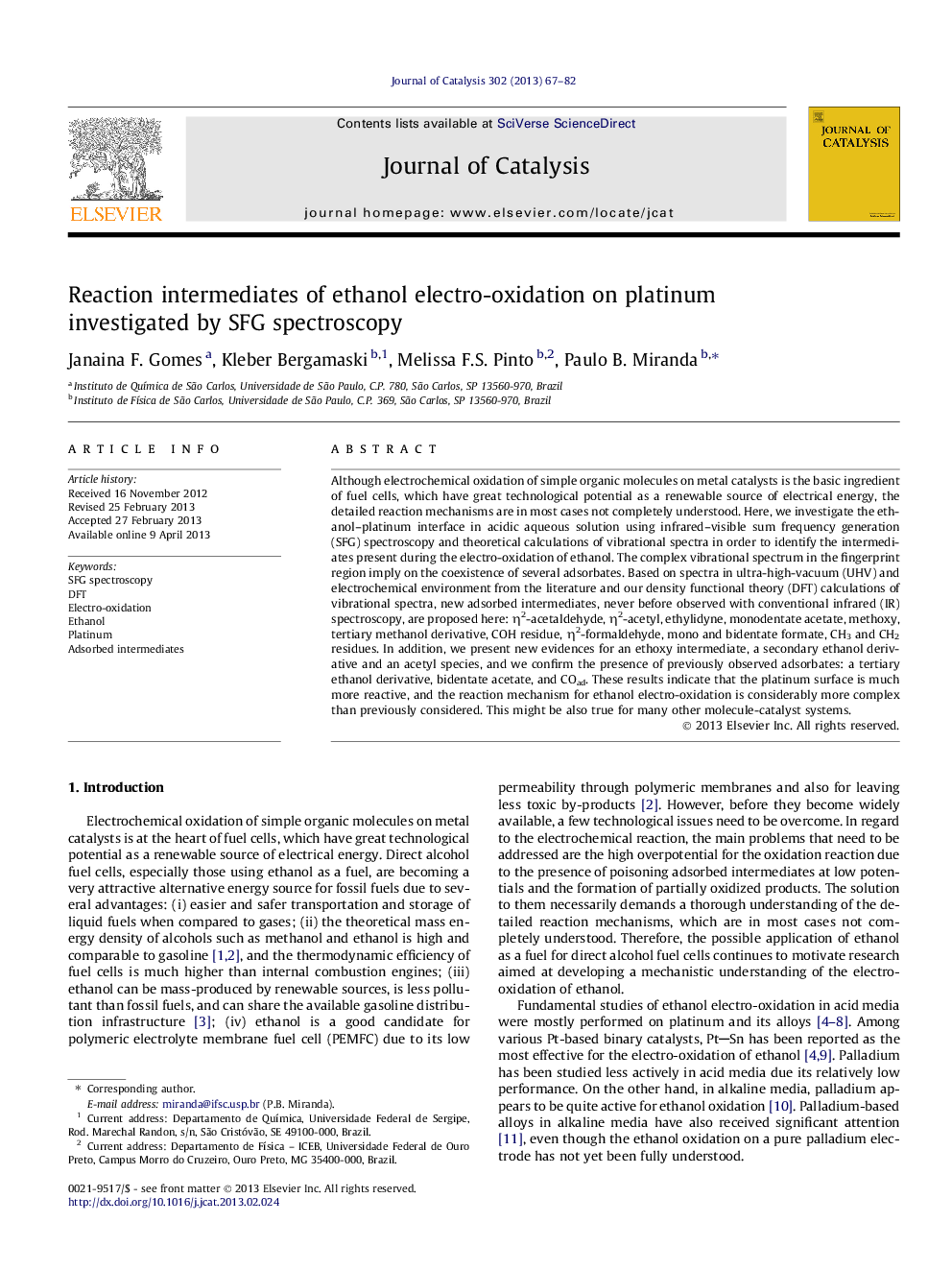| کد مقاله | کد نشریه | سال انتشار | مقاله انگلیسی | نسخه تمام متن |
|---|---|---|---|---|
| 61241 | 47572 | 2013 | 16 صفحه PDF | دانلود رایگان |

• We investigated the ethanol–platinum interface in acidic medium by SFG spectroscopy.
• Complex vibrational spectra imply on coexistence of many adsorbates.
• New adsorbed intermediates of ethanol electro-oxidation on Pt are proposed here.
• Ethanol electro-oxidation mechanism is more complex than previously considered.
Although electrochemical oxidation of simple organic molecules on metal catalysts is the basic ingredient of fuel cells, which have great technological potential as a renewable source of electrical energy, the detailed reaction mechanisms are in most cases not completely understood. Here, we investigate the ethanol–platinum interface in acidic aqueous solution using infrared–visible sum frequency generation (SFG) spectroscopy and theoretical calculations of vibrational spectra in order to identify the intermediates present during the electro-oxidation of ethanol. The complex vibrational spectrum in the fingerprint region imply on the coexistence of several adsorbates. Based on spectra in ultra-high-vacuum (UHV) and electrochemical environment from the literature and our density functional theory (DFT) calculations of vibrational spectra, new adsorbed intermediates, never before observed with conventional infrared (IR) spectroscopy, are proposed here: η2-acetaldehyde, η2-acetyl, ethylidyne, monodentate acetate, methoxy, tertiary methanol derivative, COH residue, η2-formaldehyde, mono and bidentate formate, CH3 and CH2 residues. In addition, we present new evidences for an ethoxy intermediate, a secondary ethanol derivative and an acetyl species, and we confirm the presence of previously observed adsorbates: a tertiary ethanol derivative, bidentate acetate, and COad. These results indicate that the platinum surface is much more reactive, and the reaction mechanism for ethanol electro-oxidation is considerably more complex than previously considered. This might be also true for many other molecule-catalyst systems.
SFG results reported in the present work indicate that the platinum surface is much more reactive, and the reaction mechanism for ethanol electro-oxidation is considerably more complex than previously considered. This might be also true for many other molecule-catalyst systems.Figure optionsDownload high-quality image (193 K)Download as PowerPoint slide
Journal: Journal of Catalysis - Volume 302, June 2013, Pages 67–82